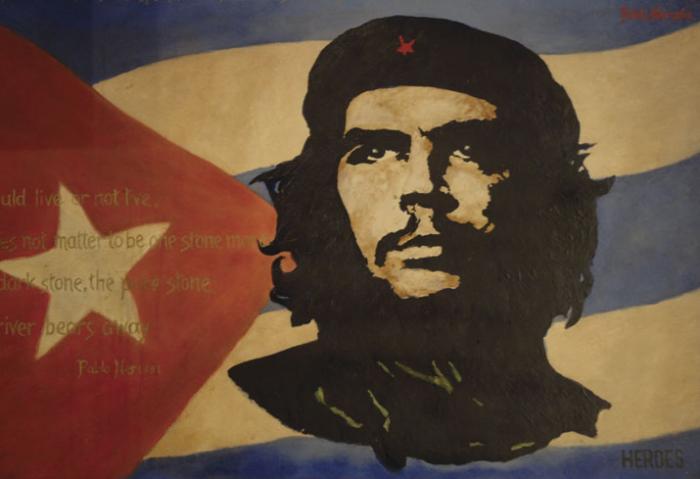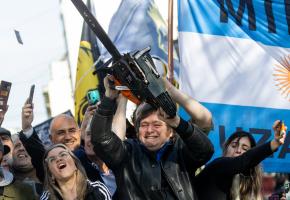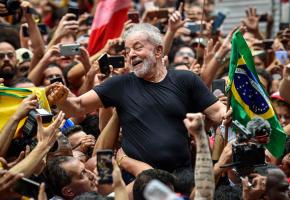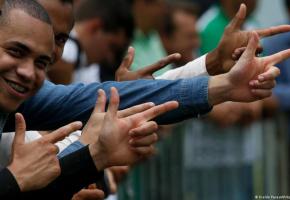1. Ernesto ‘Che’ Guevara – Ask anyone to name a revolutionary and, male or female, the word Che will ooze dreaminly from their lips. The straggly-haired, wispy-bearded, implausibly handsome Argentine hero of the Cuban revolution was rendered even more attractive by avoiding the pitfalls of becoming a post-vitcory dictator and leaving glory in Cuba to continue leading the impoverished masses in Africa and the Bolivia, where he was executed by the CIA. To top off the romantic Alpha-male irresistebility he was also a doctor, a prolific writer, and advocate of 'The New Man" - yes the feminists' fantasy. It 's no wonder that, since his death, Che’s image has become more ubiquitous than Ronald McDonald, used to sell everything from trainers to perfume to ice cream. The sound of poor Che spinning in his grave probably reached maximum pitch in 2006, when our very own Prince Harry was photographed wearing a Che Guevara T-shirt at a polo meeting.
2. Simón Bolívar – Long before El Che was even a glint in his father’s eye, the quintessential Latin American Revolutionary was the Venezuelan Símon Bolívar. Bolívar not only liberated Venezuela from the Spanish, but also of Bolivia, Colombia, Ecuador, Panama and Peru. Bolívar was a proponent of pan Latin-Americanism, and in 1821 created Gran Colombia, a super-state encompassing most of modern-day Colombia, Venezuela, Ecuador and Panama. Bolívar died of tuberculosis in 1830, as the nation he had created was collapsing beneath the weight of conflicting regionalist tensions. While his vision may not have come to fruition, Bolívar's continuing influence in Latin America can be seen throughout the continent, especially on the current Venezuelan president Hugo Chávez, who in 1999 renamed the country the ‘Bolivarian Republic of Venezuela.’ In a macabre twist of events, Chávez recently ordered the exhumation of Bolívar’s corpse in order to determine whether he actually died from tuberculosis, as is believed, or whether he was poisoned. This will do nothing to silence those who suspect Chávez may have mislaid a marble or two somewhere.
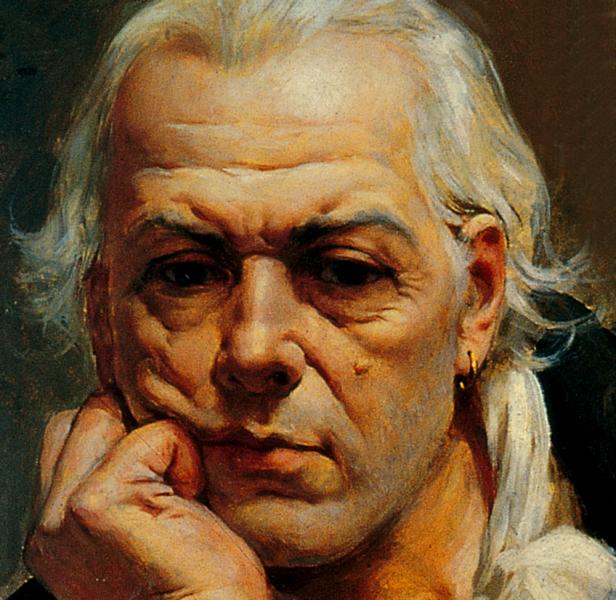
3. Francisco de Miranda – The romantic, silver-haired Venezuelan dreamt of a unified, free Latin American nation, stretching from Louisiana to Tierra del Fuego. Miranda was born in Caracas to a wealthy Venezuelan family in 1750, He devoted his life to revolutionary activity, fighting against the British for the Spanish, visiting the Founding Fathers in the United States, and fighting on both sides during the French Revolution. Not content with all of this, he returned to Venezuela in 1810 to support the new republic. Miranda dreamed of a single Latin American nation called Colombia, which would have stretched from Louisiana in the present day United States, to Tierra del Fuego. His attempts to negotiate an armistice with the Spanish , however, was regarded as treason by Bolívar who had him arrested. He was handed over to the Spanish and he died in prison in Cádiz in 1816.
4. José de San Martín – Along with Bolívar, the other great South American liberator was the Argentine José de San Martín, who helped to liberate Argentina, Chile, and large parts of Peru. San Martín was born in Argentina but grew up in Spain, initially pursuing a career in the Spanish army. However, he faced prejudice and discrimination on account of his birth in the Americas, and in 1812 sailed to Argentina to assist with the further liberation of the continent. San Martín’s military career came to a mysterious end after a meeting with Simon Bolívar in Guayaquil, Ecuador, in 1822. The two liberators met to discuss the future of the continent but failed to reach an agreement, despite their common goal. San Martín gifted his army to Bolívar, who used it to complete the liberation of Peru. San Martín himself retired, first to Mendoza, and then eventually to Boulogne-Sur-Mer, France, where he died in 1850. The Guayaquil conference is referred to by Jorge Luis Borges in his story entitled Guayaquil.
5. José Martí – One of the great Latin American intellectuals, Martí was born in Havana, Cuba, in 1853. He studied in Spain, and travelled extensively throughout Latin America and the United States, trying to organize support for Cuban independence. He returned to Cuba in 1895 and was killed at the Battle of Dos Ríos, following a reckless two-man charge on a Spanish regiment.Fortunately he was a better writer than he was a soldier, and his vast body of work continues to exert a profound influence over Latin American thought. He remains a hero for both pro-Castro Cubans and anti-Castro Cuban exiles alike.
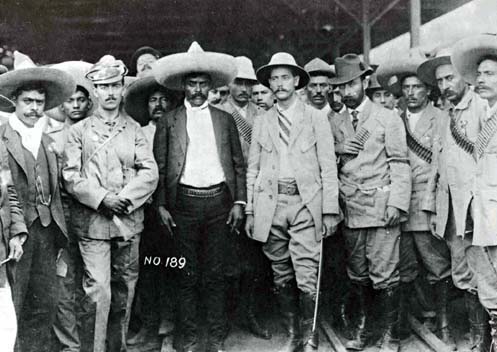
6. Emiliano Zapata – He of the eponymous moustache, born in 1879 to a Mexican peasant family, Zapata grew up in the countryside with a first hand experience of rural inequality. Initially he campaigned peacefully for land reform and for the rights of peasant communities, but frustrated by the government’s protection of the wealthy owners of the haciendas, he took up arms. He formed the Liberation Army of the South and in 1910 participated in the revolution that overthrew the autocrat Porfirio Díaz. However, after the revolution he failed to achieve the reform he had campaigned for, and continued with his armed struggle. He was ambushed and assassinated in 1919 by troops loyal to the then president, Venustiano Carranza. He was depicted by Marlon Brando in the 1952 film Viva Zapata!
7. Farabundo Martí – Known as ‘El Negro,’ Martí is a martyr to the Salvadoran left. Martí was first arrested in 1920 for organizing student protests at the University of El Salvador. He was exiled in Guatemala and Mexico but returned to El Salvador in 1925. In 1932 he led an uprising of workers and peasants in the wake of a catastrophic volcanic eruption. The government responded by massacring 30,000. Martí was arrested and executed. His name was adopted by the FMLN, a former guerrilla group which conducted a Civil War against the Salvadoran military government from 1980-1992, one of the longest and bloodiest in Latin American history. Since 1992 the FMLN has been a legal political party and is currently in power in El Salvador.
8. Augusto César Sandino – The yanqui-baiting Sandino conducted a guerrilla campaign in Nicaragua against the U.S. military occupation of 1927 to 1933. Sandino and his men caused mayhem by attacking not only the U.S. military and Nicaraguan National Guard, but also U.S. owned businesses in Nicaragua. He was murdered in 1934 under the orders of Anastasio Somoza. Somoza subsequently established an autocratic dynasty marked by human rights violations and rampant corruption. The Somoza family dominated Nicaraguan politics until 1979, when a group bearing Sandino’s name toppled them.
9. Carlos Fonseca Amador – Fonseca was the founder of this group, the Sandinista National Liberation Front. As a young man he was influenced by the success of Fidel Castro’s 26th of July Movement, and spent time in Cuba training and studying guerrilla methods with which to oppose the Somoza dictatorship. In 1964 he was arrested in Managua and put on trial, during which time he wrote the pamphlet ‘From Prison I Accuse the Dictatorship.’ He was released in 1965 and deported to Guatemala. He spent much of the next ten years organizing support for the Sandinistas both within Nicaragua and outside the country. He was killed in a battle with the Nicaraguan National Guard in 1976, three years before the Sandinistas took power.
10. José Mujica – Mujica, affectionately known as ‘El Pepe,’ is the current president of Uruguay. He was a member of the leftist urban guerrilla group MLN-Tupamaros during the 1960s and 1970s. From 1972 until 1985 he was imprisoned by the Uruguayan military government, spending much of that time in solitary confinement. Following his release from prison and the return of democracy to Uruguay, Mujica created the Broad Front, a coalition encompassing the former MLN as well as other left-wing parties. On the 25th October 2009 he was elected president of Uruguay with nearly 52% of the vote. His fighting days long behind him, he now lives a humble life on a small farm and is a strict vegetarian.


